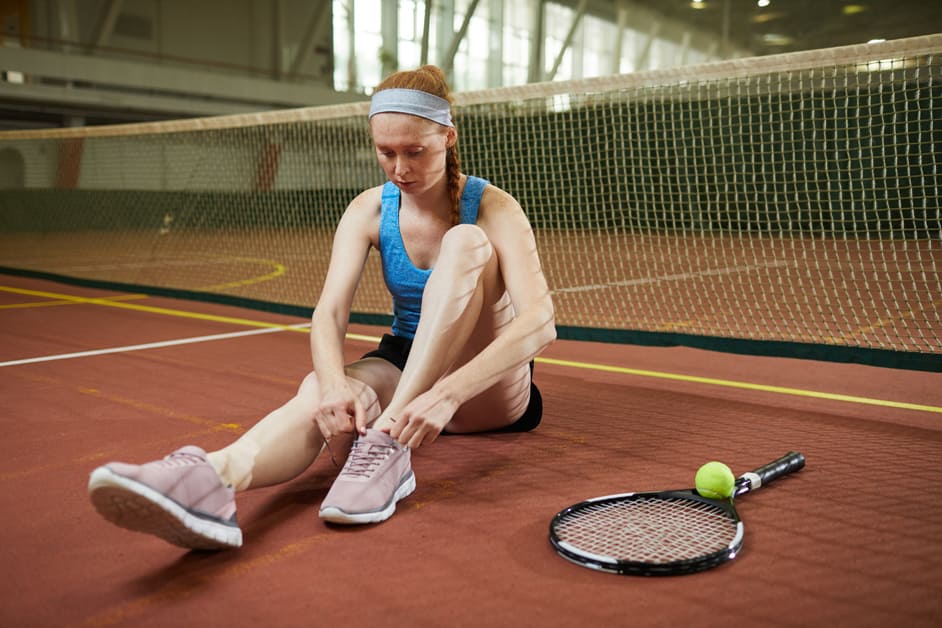Introduction
Minimalist shoes can offer relief from knee and joint pain. This guide will explain the advantages of wearing minimalist shoes and how to choose the right pair.
The idea of barefoot running is the foundation of the minimalist shoe movement. Many runners use these shoes to gain more flexibility, stability, and protection. Most come with a natural footbed to better conform to your foot.
Minimalist shoes are typically much lighter than regular shoes or trainers due to their design. They don’t need a break-in period like other types, which is great for those with chronic knee pain. This guide will help you find the right pair that offers comfort, stability, and value for money:
Anatomy of Minimalist Shoes
Minimalist Shoes: designed for comfort, support, and protection. Also allowing natural foot movement. Lightweight materials and flexible soles enable a more natural footstrike. Let’s examine their anatomy and how it can reduce knee pain.
Minimal Heel to Toe Drop
The “heel to toe drop” is a must-know term when it comes to minimalist shoes. Traditional running shoes have a heel-to-toe drop of 10 to 12 mm. Minimalist shoes, however, reduce this by 2-5 mm (1/8” – 3/16”).
This decrease allows for better gait mechanics and can help relieve knee pain. It can also increase power and speed during exercise. The close-to-the-ground design of minimalist shoes gives runners excellent ground feel. This helps with proprioception and avoiding hazards.
The lower heel-to-toe drop allows for:
- less overall weight on the feet, helping keep your feet light, and making up for any deficiencies in strength due to injury or illness
- improved performance
- less chance for fatigue or injury.
Lightweight and Flexible
Minimalist shoes can be helpful for those who have knee pain, such as arthritis. They are designed to make the muscles around the joints of your feet stronger. They have a lower heel drop (5-10mm), which encourages people to land on their forefoot or midfoot when running.
By using this mid/forefoot strike, the amount of tension placed on the knee joints reduces. The lightweight material used in these shoes also means that there is less impact with each running stride. This results in less shock waves, which could cause further pain for those with knee issues.
Wide Toe Box
Minimalist shoes have wide toe boxes. This helps spread weight and pressure evenly, reducing strain on body parts such as hips, knees, backs and feet. Toes can relax when walking in minimalist shoes, meaning better foot mechanics. Plus, it’s easier to find the right fit.
When sizing minimalist shoes, make sure your toes have enough room and can stretch naturally when you lace up.
Benefits of Minimalist Shoes
Minimalist shoes? Perfect! They’re perfect for anyone with knee pain. They have a slim, light design and little cushioning. This helps improve balance and foot control. Flexibility and cushioning can ease the pressure on the knee joint. That’s great news for those who suffer from knee pain.
In this article, we’ll talk about the amazing benefits of minimalist shoes for knee pain sufferers.
Reduced Impact
Minimalist shoes are designed to optimize body mechanics when running. This can help reduce the impact on the body. The flexible design allows for natural pronation, while still providing support. Studies show they can decrease knee ligament loading forces. For those with knee pain, these shoes can be invaluable.
Additionally, they reduce ground reaction forces by 11% for those weighing 220lbs or less. Furthermore, they improve form, posture and relaxation – all of which help minimize knee pain.
Improved Posture
Minimalist footwear is designed to make your steps count. It allows your feet to move the way they naturally should, helping you to improve your posture. By using muscles that are usually not used, over time it can correct any weak spots in your body. This can affect how you feel and look, but also reduce stress on your joints.
Good posture is very important for those who suffer from knee pain. It helps spread the load, protecting areas such as the hips, lower back, shoulders and neck. These areas will work together to maintain proper alignment with each step taken in minimalist shoes. This increases the stability of the ankle/foot complex, reducing knee pain from arthritis or other joint issues.
Enhanced Balance
Minimalist shoes have a key benefit – enhanced balance. They allow your body to sense where it is, improving posture and gait. Support for the arch and heel of the foot reduces stress, and the natural movement of the whole body helps with injury prevention. Better balance also enables people who suffer from knee pain to move with less strain. Over time, these shoes can increase strength and resilience in at risk areas, resulting in better performance and reduced joint discomfort.
Improved Strength
Minimalist shoes are great for strength. They’re close to the ground, which means you can sense and control what’s beneath you. The thin platform makes it easy for your toes and arches to flex as you walk. This helps build up strength in small muscles.
Wearing them regularly can help stabilise your knees, reduce pain and even prevent future injury. They’re especially good if you’ve had an injury or surgery related to knee instability or weakness, like jumper’s knee, runner’s knee or iliotibial band syndrome. Plus, they can speed up recovery time.
Who Should Wear Minimalist Shoes?
Minimalist shoes have great benefits for those with knee pain. These shoes have a low drop from heel to toe, meaning less energy and pressure on the knees. This can help reduce strain and minimize the amount of pain felt.
Who should wear minimalist shoes? And how do they help with knee pain? Read on to find out!
Runners
Runners are passionate about the advantages of minimalist shoes. As their training and mileage increase, knee pain can become more likely. That’s why many runners have adopted the minimal shoe revolution – to minimise pressure and impact on their joints.
Data from studies indicate that runners who switch to minimal shoes can reduce injury rates, gain better running economy, balance, and stability. For injury prevention, minimal running shoes are beneficial because they offer little support – runners must use their own strength and natural foot structure to land correctly, rather than relying too heavily on cushioning or arch support.
Studies also show that minimal running shoes can improve performance. Scientists looked at how cushioning affects force applied during a running stride. They discovered that with more cushioning, people landed more heavily than with less cushioning. Reducing cushioning lowers impact forces on joints, resulting in:
- Better endurance – something all runners want!
- Lower injury rates
- Gain better running economy, balance, and stability.
Knee Pain Sufferers
Minimalist shoes are becoming more popular. They boast great potential benefits; like improved foot health, increased performance and less injuries. However, they may not be the best choice if you have knee pain or other chronic joint issues.
Minimalist shoes are made with little to no cushioning or arch support. This encourages natural movement patterns. But, without the cushioning and support of traditional shoes, running for long distances can add stress to already vulnerable joints such as hips, knees and ankles.
If you have knee pain from running in conventional sneakers and want to try minimalist shoes, it’s important to do it gradually. Here are some tips:
- Start with shorter runs until you get used to them.
- You could also add dynamic cross-training exercises like plyometrics for an effective workout and reduce impact on sensitive joints.
Athletes
Athletes seeking an edge? Minimalist footwear may be the answer! The reduced heel-to-toe drop keeps foot and ankle in a more natural position. This leads to increased endurance and better control when running or playing agility sports.
Stress fractures, shin splints and runner’s knee? Minimalist shoes can help! They encourage proper posture by allowing natural rolling motion. This can aid athletes recovering from injury – keeping them agile without putting too much strain on weakened areas.
Light on their feet? Minimalist shoes are great! They’re more flexible than traditional running sneakers. This helps reduce shock to joints and muscles – leading to improved performance.
Conclusion
So, to sum up, minimalist shoes are great for those suffering from knee pain. They bring many health benefits, like improved foot strength, posture and alignment. Plus, the flexible sole lets feet move freely. And the extra cushioning and room in the toe box reduces joint strain. So, minimal shoes are the perfect way to enjoy exercise without the pain.
Frequently Asked Questions
Q: What are the benefits of minimalist shoes for knee pain sufferers?
A: Minimalist shoes are designed with a low heel-to-toe drop, which encourages a midfoot or forefoot strike during walking or running, which reduces the amount of force placed on the knee joint. They also can improve foot stability, which can help reduce knee pain and improve joint alignment.
Q: What type of minimalist shoes are best for knee pain sufferers?
A: Shoes designed specifically for those with knee pain will have a low heel-to-toe drop, firm cushioning, and good arch support. It is also important to find shoes that fit well, as an ill-fitting shoe can lead to additional knee pain.
Q: Is there anything else knee pain sufferers should consider when selecting minimalist shoes?
A: Knee pain sufferers should also consider the type of activities they will be performing, as some minimalist shoes are designed for specific activities such as running, walking, or CrossFit. Additionally, it is important to ensure that the shoe is comfortable and fits properly.





